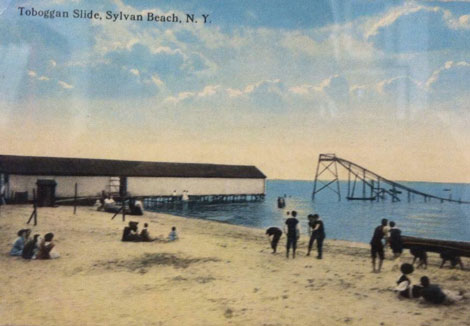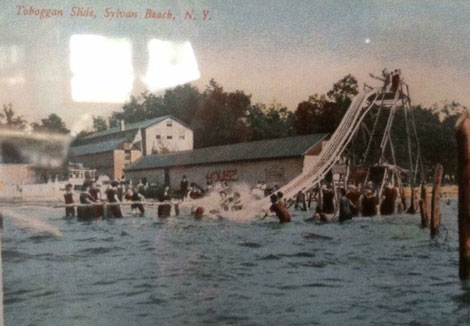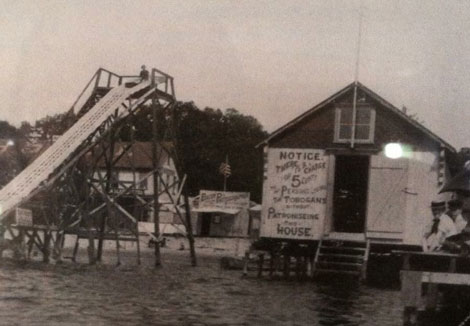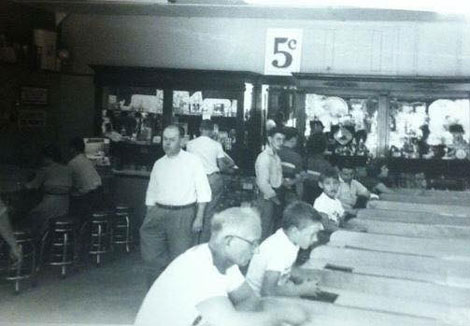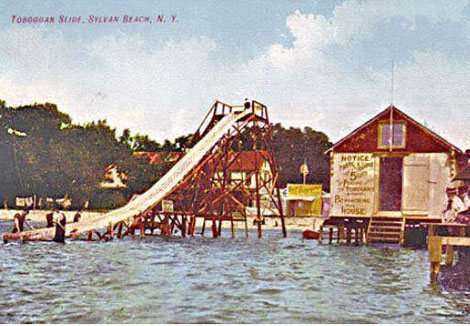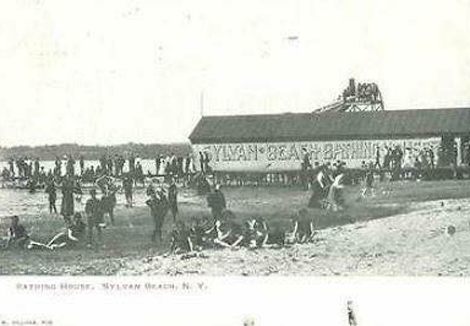History of Sylvan Beach
Before European exploration began Native Americans used the Oneida Lake region for all of its resources, especially fish. Brewerton, Shackelton Point, and other areas surrounding Oneida lake have been bearers of artifacts helping document Native American history. The Oneidas and Onondagas, members of the Iroquois Confederacy chose to settle the Oneida lake region and called the body of water Tiaoqui, which means “white water”. The Oneidas built fishing villages near the Oneida Creek’s mouth and sylvan beach along Fish Creek. Atlantic Salmon were once common in Oneida Lake and yielded the natives with a sustainable harvest which was key to their survival.
Areas surrounding Oneida Lake were opened for settlement in the late 1700′s. A company founded by George Scriba The Scriba Patent, marked a significant area that stretched from the north shore of Oneida lake to Lake Ontario. An Area on the lake’s western end was reserved for American Revolution veterans by the government. The lots that were not given to patriots were eventually sold to the public. The region was sparsely settled until the early eighteen-hundreds, the”Yankee Invasion” of Upstate New York then sparked the region’s first major development. During this time thousands of New Englanders searched for more fertile land which landed them in the Oneida Lake region.
A brief look into Sylvan Beach history!Built from 1817 to 1825 the Erie Canal actually bypassed Oneida Lake. The lake was connected to the Erie canal by the Oneida River and by two “Oneida Lake Canals.” This included the “Side Cut Canal” built in the 1830′s which connected the Erie Canal to Fish Creek. This system greatly aided in business in logging,and the east end’s sand quarrying, resulting in a successful enterprise. The second Oneida Lake canal built during the 1870′s resulted as an economic failure as the New York State railroading began.
Around 1916 the Erie Barge Canal was completed which was an enlargement of the original Erie Canal. This used Oneida Lake as part of its course. The states water transportation network became fairly dependent on the system. Tugs and Barges in the hundreds used the lake during the peak years, making Brewerton and sylvan Beach active canal ports. Communities along the lake grew at different times. The earliest settlers during the 1790′s arrived in Constantia and Brewerton. The genesis of Bridgeport and Lakeport occurred by 1811. These communities aided the surrounding farm population by acting as commercial centers. Sylvan Beach saw its initial growth in the 1870′s. Referred to as the “Coney Island of Central New York”, Verona and Sylvan Beaches transformed in the 1880’s through the 1890′s. The sprouting of hotels, and two amusement parks brought in thousands of vacationers.
The Oswego-Midland Railroad stimulated the area by Jewell and West Monroe being stop stations. Along with the Railroad a trolley line brough syracuse tourist to Lower South Bay. Grand steamboats like the Manhattan and the Sagamore awaited for tourists in the Lower South Bay. The Golden 20′s brought about an abundance of cottage and camp construction along the shoreline. The lethargic economic pace brought on by the Great Depression did slow the development of Oneida Lake, but throughout the 20th century the lake’s shoreline saw cottage development. The completion of Interstate 81 during the 1960′s created a hop, skip commute from Syracuse to Oneida. This brought about suburbanization to Cicero, and Brewerton. Federal Government and New York State funding for the Erie-Barge Canal recreational enhancement dramatically changed the Sylvan Verona Beach area.
Photos Courtesy of James at CasperCops.
For more information on CasperCops visit hauntesylvanbeach.com

